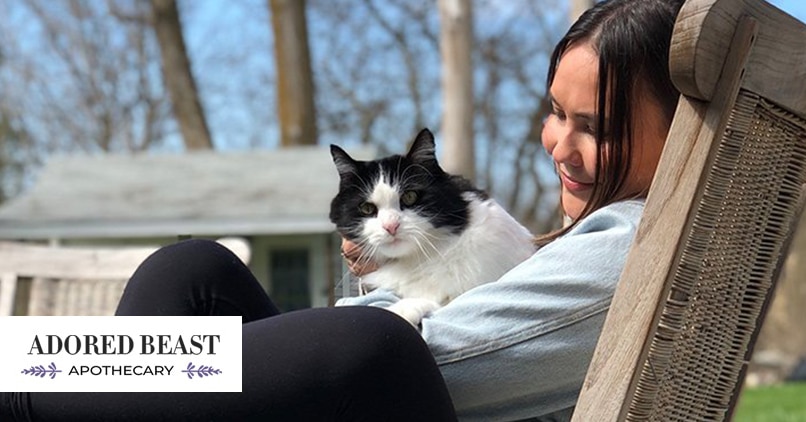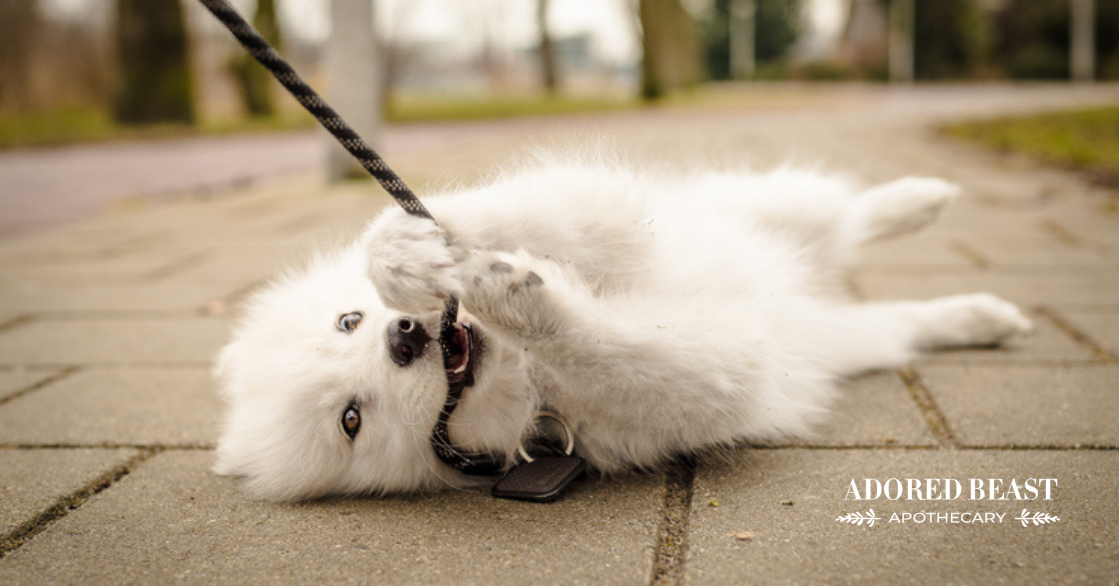The importance of a healthy bladder is so often overlooked, until there’s a problem. I’m talking about the dreaded cat or dog UTI (urinary tract infection)…
When I had my clinic, I saw so many really sick animals. Far too often, I could trace the illness back to a puppy UTI, the original cause of which was often vaccine-induced. And this initial illness is where most antibiotic use in puppies starts.
Today I want to talk about bladder health, why it’s so important, and how you can avoid a UTI.
Why Bladder Health is Important
The bladder is like a holding container that is responsible for many functions. It’s the kidneys’ main squeeze and best friend. The kidneys remove urea (a waste product) from the blood. From there, the urea travels down the tubules and into the bladder, where it’s eliminated through urination. The bladder also contributes to controlling levels of electrolytes in the body (hugely important to cell life or death and vital hydration) and it helps to regulate blood pressure.
Who knew this overlooked little organ was so important!
Most women know all too well about getting bladder infections after having sex. This happens because the urethra is located so close to the vagina. During sex, the urethra can open or stretch, making it easy for bacteria, often E. Coli, to travel up the urinary tract.
Also, as men and women age, hormones in the body decrease, and the urethral sphincter becomes weaker, making it easier for bacteria to find its way into the bladder. Hence the reason many elderly people are always on antibiotics for UTIs.
Ok… too much info for some! But, I’m mentioning this because dogs who are spayed or neutered have fewer sex hormones, and that leads to a weaker sphincter. And just like with humans, this means bacteria can enter the bladder more easily and unnaturally.
And then it happens: the constant straining, the urgency or whimpering to go outside when your animal needs to do their business. What does the vet say? UTI.
Signs of a Cat or Dog UTI
Is a cry when urinating the only sign? No, of course not. There are several things to look for.
Keep an eye out for:
- Drinking more water than usual
- Peeing in the house
- Persistent licking of urinary openings
- Straining to urinate
- Crying when urinating
- Dark or cloudy urine
- Visible blood in the urine
- Loss of bladder control or urine dribbling
- Inability to pass urine or passing very little urine
- Vomiting, lethargy, lack of appetite
- Drinking more water than usual
Putting Pets at Risk?
Often, when an animal receives this diagnosis, the immediate response is to take the prescription handed over by Dr. Conventional Vet. So what?
Well, bladder infection = antibiotics = destroying a healthy microbiome and increasing unhealthy bacteria. This results in high alkaline urine, leading to urinary crystals and a huge decrease in the overall immune system.
This leads to more drugs = ear infections, hotspots = more drugs and vet prescribed food, leading to malnutrition and gut trauma = issues like arthritis, skin disease, autoimmune diseases and worse.
See the problem? That initial UTI and antibiotic use can result in a vicious cycle of poor health.
And it isn’t just dogs at risk. Poor male cats who have been neutered have almost the opposite issue. Yes, they have reduced sex hormones, but because their poor urethra stops growing when neutered, the space that allows the urine to pass is SO TINY!
Therefore, if, or should I say when (if they’re eating dry food), their urine becomes alkaline from processed, dehydrated, disease-causing food (can you tell I just cannot stand dry food for cats?), crystals form. These crystals then scrape the inside of the urethra (OUCH!) and it becomes inflamed and swollen, spasms, blocks, and he can no longer urinate. This is a life-threatening emergency situation!
Then your cat’s sedated or anesthetized and a catheter is inserted to release the urine. This often scars the urethra and makes it even smaller, which then creates a lifetime of pain and suffering for your kitty. Thank goodness many veterinarians are now giving pain meds and antispasmodics to release the spasm first to see if they unblock, but many are still doing this invasive procedure as a first course of action.
It gets worse. In many situations, these male cats are put on less than ideal vet prescribed food for crystals that definitely do not support health and longevity. In way too many situations, these cats go on to need what’s called a urethrostomy, a surgical procedure that creates a permeant opening cut at the perineum.
Loads of female kitties also have crystals, but are less likely to block because of the physiology of their bodies. But they’re still in chronic distress! That can look like behaviour issues of inappropriate urination, aggression, hiding, over-grooming, etc.
Is it Really a UTI?
You need to make sure that the issue your animal is dealing with is in fact a UTI. There are several other issues that can mimic the symptoms, and you need to rule those out before treatment.
When talking about bladder health, it’s really important to mention interstitial cystitis. This is when the bladder wall becomes inflamed. It’s an autoimmune problem, not an infection.
Spay incontinence may also be the issue.
With cats, be sure there isn’t a urinary blockage as this can be a life-threatening situation.
You always want to be sure you bring in a sample. And yes, I know that can be tough with kitties, but here’s what I do. Use a sterilized stainless steel soup ladle and try to catch the urine mid-stream. Do not touch your animal’s body when they are urinating. If you are collecting from a cat, it’s always a good idea to have “Nosorb” on hand (a sterile kitty litter that does not absorb urine).
Be sure to ask for a culture and sensitivity as this will show if it is true bacteria and not just bacteria from contamination.
Your vet will be able to prescribe the correct antibiotic, if one is needed… which is so important as bladder infections become easily resistant to antibiotics if they are not chosen correctly!!
How to Prevent and Relieve a Cat or Dog UTI Naturally
So, how can you keep your pet’s bladder healthy? The number one key is a raw, species-appropriate diet. At the very, very least, especially for cats, a high-quality, no-grain diet, and NOT dry food.
There are also several things to add to your animal’s diet to protect that vulnerable urinary tract and prevent (or relieve) that painful cat or dog UTI.
- Cranberries
- Study in dogs proved that oral administration prevents development of UTI
- Prevents E.coli adherence to Madin-Darby Canine Kidney cells
- Anti-inflammatory and anti-microbial properties
- D-Mannose
- A simple sugar closely related to glucose that occurs naturally in berries and some plants
- Does not affect blood sugar
- Binds to bad bacteria to carry it out of bladder in the urine
- N-acetyl glucosamine
- Targets inflammation response in smooth muscle of bladder wall & lining
- Helps keep the lining of the urinary tract healthy and strong
- Marshmallow root
- Rich in mucilage
- Helps to coat the mucous membranes
- Protects delicate tissues
- Uva ursi
- Contains natural compounds called arbutin
- Is a known astringent
- Is known to help decrease inflammation
- Nettle leaf
- Tonic herb
- Used as anti-inflammatory, astringent
- Diuretic
- Supports the kidneys
- Multi-strain probiotic blend
- 1 billion CFUs
- Provides beneficial bacteria to establish a colony and keep bad bacteria at bay
Every system of the body is equally important because it is all interconnected. Don’t forget the bladder! It needs support and love too!












![[RESEARCH] Is Herbicide Safe for Dogs?](https://blog.adoredbeast.com/wp-content/uploads/2025/06/herbicides-safe-for-dogs-103x55.png)